2011 : Dr. Philippe Rigoard, then head of neurosurgery, obtains a government program to support costly innovative techniques (STIC). An embryonic research team on neurostimulation techniques is created, under the name "N3LAB" (Neuromodulation and Neural Networks Lab). Made up of 4 people (including Philippe Rigoard and Manuel Roulaud), the team eventually piloted the French multi-center randomized ESTIMET study, including the fifteen university hospital centers (CHU) most advanced in spinal cord neurostimulation and a research budget of 1.9 million euros to manage.
First scientific developments and evolutions
Over the ensuing years, the team has developed a structure that today focuses on three main areas of research : spine biomechanics, pain and disability.
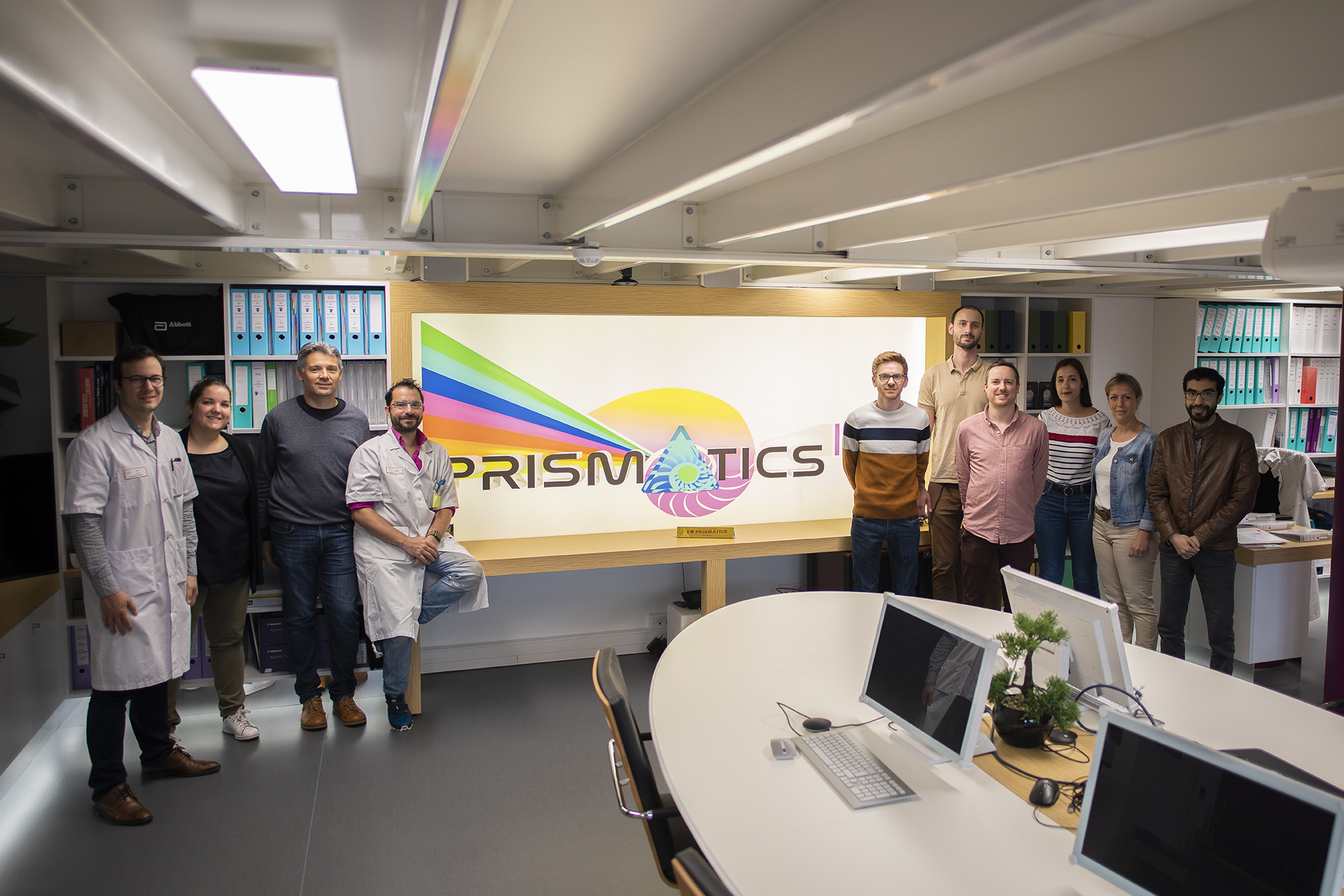
This axis explores the applications of biomechanics in the treatment and rehabilitation of spinal pathologies. It seeks to understand and apply biomechanical principles to improve clinical interventions. In 2008, Professor Philippe Rigoard initiated dialogues between clinicians and fundamentalists, imagining the first projects of spinal biomechanics with the objective of studying cyphoplasty, occipitocervical fixations and thoracic-lumbar osteosynthesis. The click took place thanks to his meeting with Arnaud Germaneau, biomechanician. Together, they obtained funding of several hundred thousand euros from manufacturers, including Medtronic Spine. A partnership was also established with the P' Institute, a research laboratory in the fields of Physical Sciences and Engineering Sciences, as well as the team «Photomechanics & Experimental Mechanics» of the CNRS UPR 3346 at the University of Poitiers. This axis initially allowed the biomechanical study of minimally invasive spinal devices used in thoracic-lumbar hinge fracture surgeries, such as kyphoplasty and percutaneous osteosynthesis. This research was then applied to members. Gradually, this theme has evolved towards the field of disability, and the biomechanical tools developed for the trunk and limbs now allow to respond to new applications specific to disability.
These projects have made it possible to develop traction machines, reproduction of vertebral fractures and analyses of movements in three dimensions, in pure couples, without friction, using non-contact optical methods at the P’ Institute with Arnaud Germaneau and Jean-Christophe Dupré. A biomechanical research platform was created in the anatomy laboratory of the Faculty of Medicine of the University of Poitiers thanks to these projects and machines. Research with the contribution of numerical modeling was also initiated through a collaboration with Ansys, a world leader.
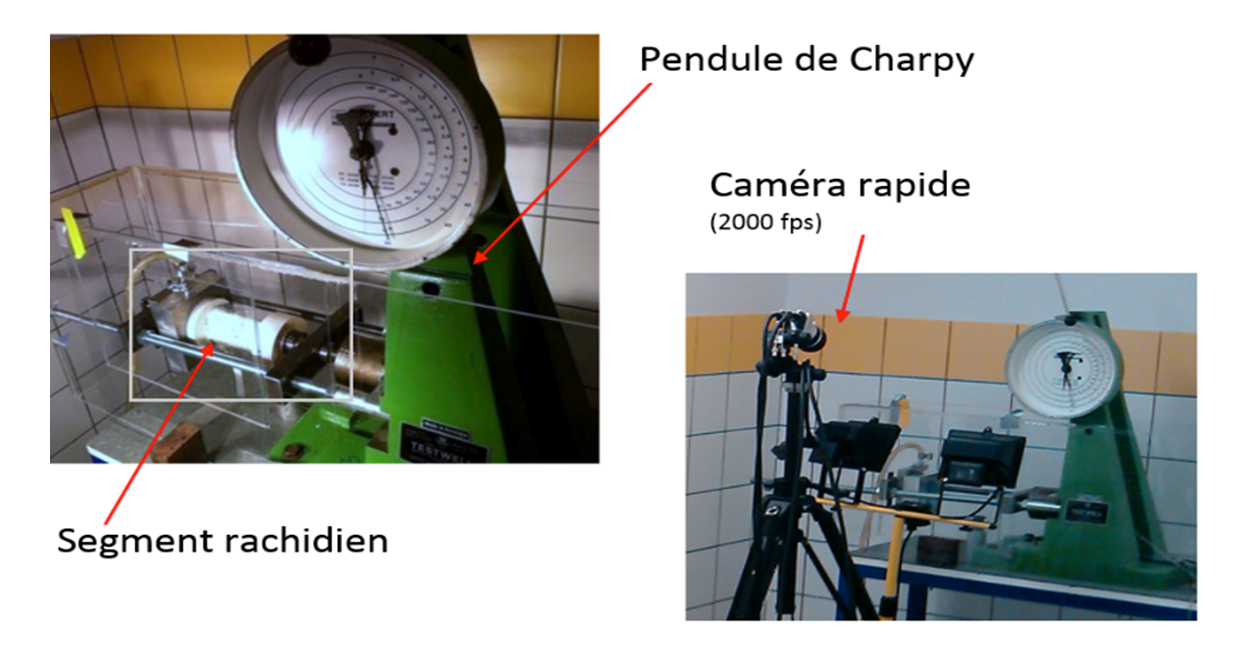
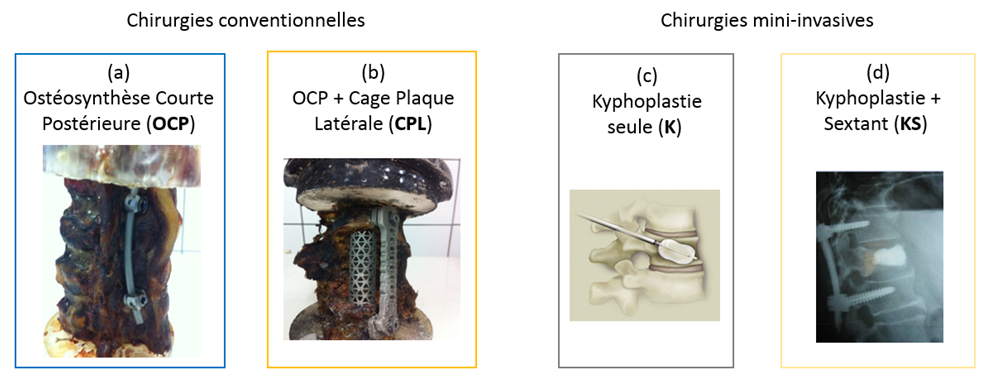
The collaboration with the PPRIME Institute, via the Transversal Group in Biomechanics and Medical Applications (GT-BAM), aims to apply biomechanics to clinical and technological contexts. This collaboration has allowed the development of new biomechanical models of the spine, used to optimize surgical techniques and orthopedic devices. A study of 200 patients showed that the use of these new models reduces surgery time by an average of 15% and improves the precision of interventions.
The pain axis focuses on the assessment, management and treatment of pain. It uses innovative tools and multidimensional approaches to improve the quality of life of patients with chronic pain. This axis allowed the realization of research projects in the field of implanted neurostimulation techniques, with the projects PREDIBACK (€793,000), PREDIBACK2 (€709,000), BOOST DRG (€728,000), & MULTIWAVE (€358,000). These projects required the development of a neuro-informatics research area based on large-scale data processing and the deployment of artificial intelligence techniques to stratify patient populations, prioritize therapeutic options and meet the qualitative ambitions of a «5P» medicine (Preventive, Predictive, Participatory, Personalized and Evidence-based).
The pain axis allowed the creation of the PRISMap software allowing the evaluation and mapping of body pain in a reliable and reproducible quantitative objective way (filing of 3 international patents). The acquisition of these objective data, coupled with multi-parametric prospective data collection, resulted in the creation of algorithmic statistical models to predict a patient’s response to implanted neurostimulation therapies and analgesic techniques, as part of a care pathway for chronic pain patients. In 2022, it was used to assess more than 500 patients with chronic pain, enabling objective quantification of pain and contributing to a new multi-dimensional index of clinical response (MCRI) to therapy. Early data show a 25% improvement in pain scores after six months of using PRISMap to guide treatment.
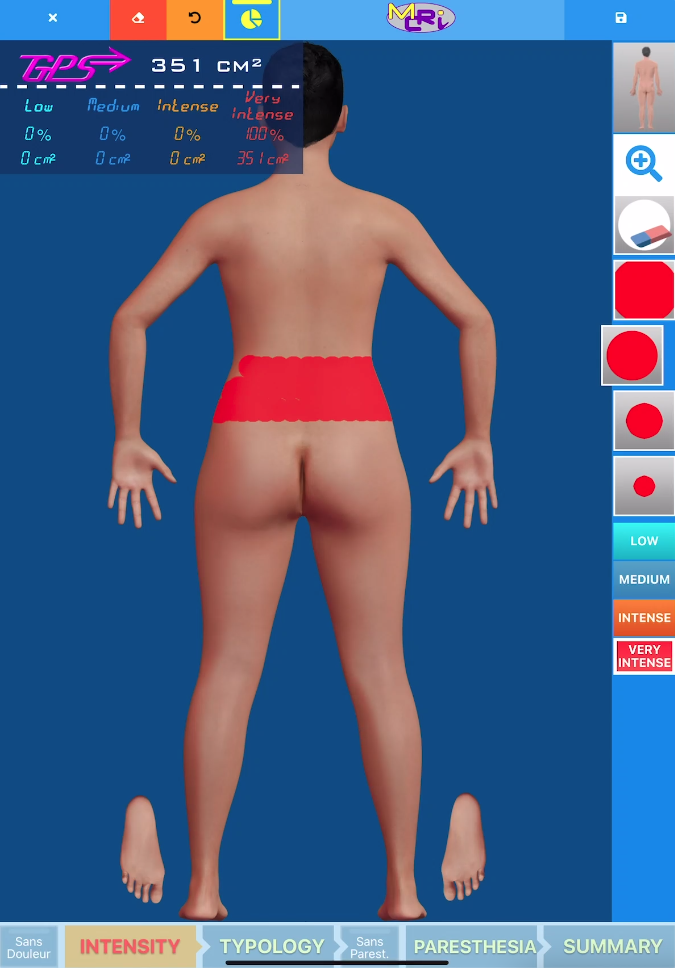
Several studies have been conducted to determine the clinical effectiveness of different types of neuromodulation by targeting various anatomical stimulation sites, such as the spinal cord, spinal ganglion, peripheral nerve and subcutaneous innervation system. These studies also examined the spatial resolution of the delivered signal and its temporal resolution (tonic wave, burst, high frequency). This research makes it possible to compare neurostimulation devices to propose personalized decision algorithms according to the clinical and psycho-social profile of patients suffering from chronic pain.

Schema showing the diffusion of electric fields with assessment of spinal and corticospinal activity (EEG/fMRI)
Collaborations with ANSYS, a specialist in numerical simulation, via a CIFRE thesis, have consolidated these results. The numerical modeling work will help to automatically identify the optimal site for the implantation of spinal cord stimulation.
In addition, medico-economic clinical studies, such as PREDIBACK and PREDIBACK 2, use artificial intelligence techniques to identify predictive parameters of optimized therapeutic response and neurostimulation. These studies also aim to identify the neuronal correlates of implanted patients, in order to improve the therapeutic indications of neurostimulation.
The disability axis focuses on research aimed at improving the autonomy and rehabilitation of people with disabilities, addressing biomechanical issues (both hard and soft tissues) and managing the associated pain.
In 2022, the project "Functional influence of Sural Triceps and Long Fibular in primary or secondary deformations of the foot" began under the supervision of Pr Parratte, expert in functional anatomy. This project aims to explore new applications of botulinum toxin and innovative techniques such as cryoneurotomies to treat spasticity and deformities of varus-equine feet, still little developed in France. A multicentre clinical study, having obtained a PHRC-National, coordinated by Dr Romain David and with the collaboration of Dr Winston of the University of Victoria in Vancouver, Canada, is planned to medically and economically validate percutaneous cryoneurotomy. This international collaboration with Vancouver aims to introduce cryoneurotomy in France and potentially in Europe, by clinically and medico-economically validating this technique through the PHRC-National CRYOSTROKE program.
This axis focuses on translational biomechanics applied to disability, notably through the e-stroke project (recently obtained funding of €150,000). This project aims to improve the post-stroke patient journey by using a digital platform for early detection and management of rehabilitation. It focuses on the use of cryoneurotomy, an innovative technique to treat lower limb spasticity, which affects about 30% of post-stroke patients, with a follow-up target of about 1,000 patients per year.
The locomotor component of this axis creates a natural link with axis 1, Spine-Biomechanics, and axis 2, Pain. For example, the study of innovative rehabilitation devices and electronic motor resuscitation of the limbs is part of this continuity. A notable device is the LOKOMAT, an electro-mechanised training device for walking recovery, which has shown significant improvements in patients with neurological and locomotor pathologies. A study of 50 patients revealed a 20% increase in walking distance after six weeks of training with LOKOMAT.
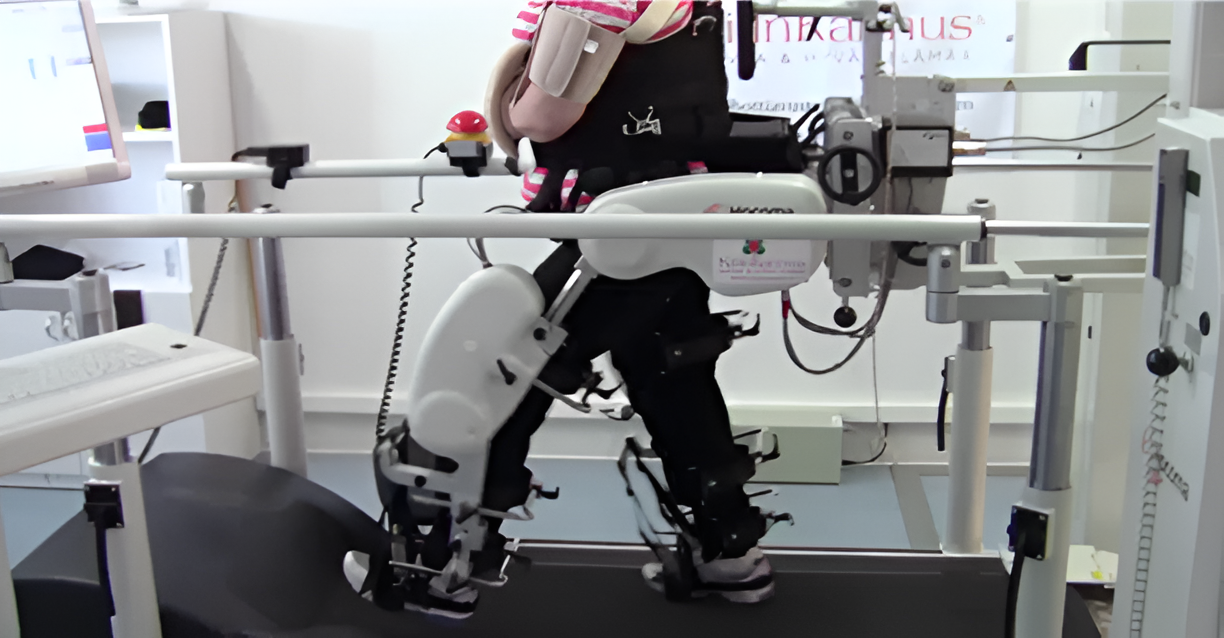
Prediction will also be given to this axis in the coming years, under the clinical supervision of Philippe Rigoard and Dr Romain David, future university of physical medicine and rehabilitation (MPR), thus strengthening the Prismatics team.
The study of walking parameters through the use of connected objects in patients with spasticity following a stroke will be at the heart of axis 3 disability in the coming years.
A close collaboration is emerging with the company B-Braun, whose international headquarters in terms of research and development, is based in Chasseneuil du Poitou. The objective of this collaboration is to develop modeling tools and means to study the mechanical effects related to the installation and anchoring of intrathecal diffusion devices, not only in the field of spasticity, but also new neurological therapies, still confidential.
The anatomy of the limbs and muscles will also be valued in the coming years, thanks to the collaboration with a renowned anatomist, Pr Bernard Paratte, working on neuromuscular compartmentalization to completely revisit current anatomical data. Dr Romain David will make it his Science thesis topic.
This work should lead to the development of a complete intrathecal technical solution, based on validated biomechanical considerations, but also studies concerning the diffusion of molecules, to predict and analyze the mechanical effects associated with each step of the surgical procedure.
Finally, our team worked for more than 10 years on an atlas of peripheral nerve anatomy with, today, a new international version in production, aimed at experts, thanks to the integration of all ultrasound techniques, all surgical approaches and applications of implanted neurostimulations that will result from this peripheral anatomical nerve knowledge.
Our PRISMATICS research team :
email : prismatics.lab@gmail.com
Telephone :
Manuel Roulaud
+33(5) 49 44 32 23
Monday - Friday, 9AM - 6PM
Address :
2 rue de la Milétrie
Bâtiment CCV, étage 0, 86000 Poitiers